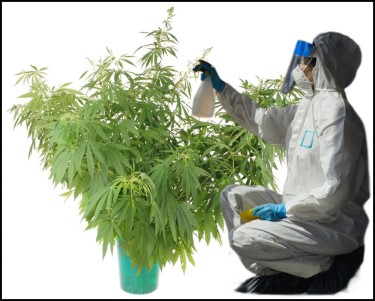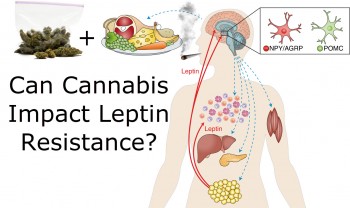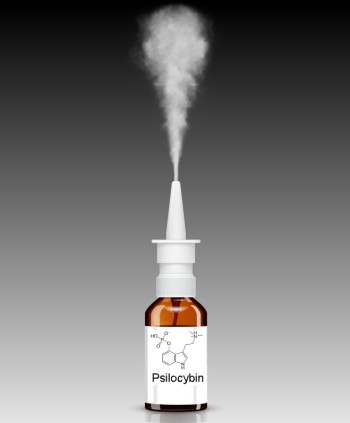
A recent study conducted by researchers at Cornell University revealed the potential use of cannabinoids from hemp as a foundation for natural pesticides. Published in the October issue of Horticulture Research, the research, led by Larry Smart, a plant breeder and professor at Cornell's AgriTech’s College of Agriculture and Life Sciences, demonstrated that higher concentrations of cannabinoids in hemp leaves correlated with reduced damage from pests.
Funded by the New York State Department of Agriculture and Markets through Empire State Development, the study focused on Trichoplusia ni larvae, showing that when feeding on leaves with higher cannabinoid concentrations, the larvae consumed less leaf area and experienced stunted growth. To eliminate confounding factors, artificial insect diets were amended with cannabinoids in physiologically relevant concentrations, specifically isolating CBDA and CBGA.
The results indicated that as cannabinoid concentration increased, larvae exhibited lower rates of survival and reduced growth, supporting the hypothesis that cannabinoids play a defensive role against chewing herbivores. Notably, the study did not explore the use of THCA as a pesticide due to federal restrictions on high THCA plants within the Cornell program.
This discovery holds significance as it marks a potential initial step towards the development of natural pesticides applicable to non-edible plants. Larry Smart emphasized the defensive nature of cannabinoids, particularly their accumulation in female flowers to protect seeds. However, he noted that comprehensive experimental results establishing a direct link between cannabinoid accumulation and harmful effects on insects have been lacking.
George Stack, the paper's first author and a postdoctoral researcher in Smart’s lab expressed excitement about the potential use of cannabinoids as pesticides but acknowledged regulatory barriers due to the compounds' pharmacological activity. Further research is deemed necessary to identify the pests against which cannabinoids would be most effective.
How Higher Cannabinoid Concentrations in Hemp Leaves Deter Pests
In the intricate dance between plants and pests, Cornell University's recent study has spotlighted a compelling revelation: the potent defense mechanism housed within the higher concentrations of cannabinoids found in hemp leaves. Researchers, spearheaded by Larry Smart, have illuminated a natural deterrent against pests, notably demonstrated through reduced damage inflicted by Trichoplusia ni larvae.
The study's focal point lies in deciphering the correlation between elevated cannabinoid levels and the resilience of hemp plants against pests. As Trichoplusia ni larvae fed on leaves boasting higher cannabinoid concentrations, the observed outcomes revealed a remarkable phenomenon: diminished consumption of leaf area and stunted growth. These findings provide a glimpse into the intricate dynamics of plant-insect interactions, suggesting that cannabinoids play a pivotal role in repelling herbivores.
This subheading explores the intricate details of the study's first major revelation, shedding light on how nature's own arsenal of cannabinoids acts as a formidable defense mechanism for hemp plants, offering insights that could revolutionize pest management strategies in agriculture.
A Precise Approach to Isolating CBDA and CBGA
The journey into understanding the potential of cannabinoids as natural pesticides takes us deep into the controlled realms of artificial insect diets and meticulously crafted conditions. In this section, we unravel the intricacies of the methodology employed by Cornell University researchers to isolate CBDA and CBGA, two key cannabinoids, and eliminate any confounding factors that might cloud the study's precision.
To ensure accurate observations and reliable results, the researchers amended artificial insect diets with cannabinoids in concentrations that mirror physiological relevance. This deliberate approach allowed them to dissect the specific impact of CBDA and CBGA, shedding light on their individual roles in deterring pests. By isolating these cannabinoids, the study not only bolsters the validity of its findings but also opens the door to a nuanced understanding of how different components within hemp contribute to its defense mechanisms.
This subheading navigates through the scientific rigor applied in the study, emphasizing the controlled conditions that facilitated a focused exploration of the effects of CBDA and CBGA. It underscores the importance of this precision in revealing the potential of cannabinoids as a groundbreaking tool in the development of natural pesticides.
Implications for Pesticide Development
Embarking on the promising journey of harnessing cannabinoids as natural pesticides, researchers at Cornell University encountered significant regulatory barriers that shape the landscape of this pioneering exploration. This section delves into the intricate challenges faced by the Cornell program, particularly the federal restrictions that curtailed the examination of THCA as a potential pesticide. The complex interplay of regulations highlights the need for a careful balance between scientific innovation and compliance with existing frameworks.
The significance of this discovery extends beyond the confines of the laboratory, marking a potential initial step towards the development of natural pesticides for non-edible plants. Larry Smart, the leading force behind the study, emphasizes the defensive nature of cannabinoids, particularly their accumulation in female flowers to protect seeds. Yet, he notes a gap in comprehensive experimental results establishing a direct link between cannabinoid accumulation and harmful effects on insects, underscoring the intricate web of relationships waiting to be unraveled.
George Stack, the paper's first author and a postdoctoral researcher, adds a pragmatic layer to the excitement surrounding cannabinoids as pesticides. While acknowledging the potential, Stack highlights the regulatory barriers stemming from the pharmacological activity of these compounds. This recognition underscores the necessity for further studies to not only identify the pests against which cannabinoids would be most effective but also to navigate the regulatory landscape and ensure the safe and effective deployment of these natural pesticides. The future of this field hinges not only on scientific advancements but also on strategic maneuvering within regulatory frameworks, shaping the path towards sustainable and innovative pest management solutions.
Bottom Line
In essence, Cornell University's research on the potential use of hemp-derived cannabinoids as natural pesticides not only sheds light on the intricate dynamics between plants and pests but also underscores the significance of precision in scientific methodology. While unveiling the defensive capabilities of cannabinoids presents a promising step toward sustainable pest management, the regulatory hurdles and the need for further research, as emphasized by Larry Smart and George Stack, remind us that realizing this potential requires careful navigation and continued scientific exploration. The bottom line is a call for a balanced approach, recognizing the transformative possibilities while acknowledging the complexities that lie ahead in deploying cannabinoids as innovative tools in agriculture.
CONTAIMINATED WEED, YOU BET, READ ON...
WHAT % OF LEGALLY SOLD WEED TESTS POSITIVE FOR MOLD OR YEAST?






